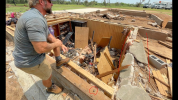Also I think this is something interesting to compare, though its an older tornado.Alright I have just gotten back from talking with Hamilton County Historical Society on Tri-State and boy, there are loads of high quality images, I will put some in the article but what stood out to me was the hundreds of young persimmon hardwood trees that were entirely stripped of their bark...in an entirely rural area. Just incredible, perhaps the worst instance of debarking I have seen. Photo credit to McCoy Memorial Library and Hamilton County Historical Society.
View attachment 31532
Navigation
Install the app
How to install the app on iOS
Follow along with the video below to see how to install our site as a web app on your home screen.
Note: This feature may not be available in some browsers.
More options
-
Welcome to TalkWeather! We see you lurking around TalkWeather! Take the extra step and join us today to view attachments, see less ads and maybe even join the discussion. CLICK TO JOIN TALKWEATHER -
Current Tropical Systems Melissa
You are using an out of date browser. It may not display this or other websites correctly.
You should upgrade or use an alternative browser.
You should upgrade or use an alternative browser.
Significant Tornado Events
- Thread starter locomusic01
- Start date
jiharris0220
Member
I’ve seen this photo, and it doesn’t look any worse than the scouring produced by the Matador tornado.The intensity of the damage I think. Bridge Creek just had unreal scouring. Like Matador was crazy violent, not sure about it being on Jarrell or Bridge Creek level though.
Obviously both photos of scouring where taken far away so it’s impossible to tell how deep said scouring in these specific areas were.
Although bridge creek did produce confirmed scouring over 1ft deep, matador was not that extensively surveyed unfortunately.
True, but I still have not seen anything from Matador that quite compares to this.I’ve seen this photo, and it doesn’t look any worse than the scouring produced by the Matador tornado.
Obviously both photos of scouring where taken far away so it’s impossible to tell how deep said scouring in these specific areas were.
Although bridge creek did produce confirmed scouring over 1ft deep, matador was not that extensively surveyed unfortunately.







jiharris0220
Member
Matador has done all of this, obviously no where near as many pictures or examples to go off of since it had a substantially shorter life span and track. Along with very little coverage of the aftermath area.True, but I still have not seen anything from Matador that quite compares to this.
View attachment 37119
View attachment 37120
View attachment 37121
View attachment 37122
View attachment 37123
View attachment 37124
View attachment 37125




joshoctober16
Member
how ironic there was a tornado in rolling fork 10 minutes ago.... and quite visibleWell, tomorrow will be the two year anniversary of the Rolling Fork, Mississippi Tornado and the other destructive March 24, 2023 tornadoes. Cannot believe it has already been two years. Still remember watching Ryan Hall live and seeing the tornado plow it’s way through town knowing something bad was going to happen.
The Winona tornado was close to another catastrophe due to the fact that it was so obvious another violent tornado was on the ground and aiming for a bigger populated area. And the Amory/Wren EF3 left me speechless with the way it looked on radar. I had never seen such an intense and large signature on radar like I did with the Amory tornado.
Here are some pictures that truly capture the nightmare these people experienced that day.
View attachment 37047View attachment 37049View attachment 37050View attachment 37051View attachment 37052View attachment 37053View attachment 37054View attachment 37055View attachment 37056View attachment 37057
Juliett Bravo Kilo
Member
While this is intense, Matador's nowhere near comparable to Bridge Creek, Jarrell or the like. That kind of comparison is laughable at best.I’m beating a dead horse here but I’ll say it again anyways.
Matador imho, was THE most violent tornado, comparable to 1999 bridge creek and Jarrel. This tornado produced upper echelon ef5 damage that only few achieved.
1: caused vehicles to go missing while utterly dismantling many others into metal/steel scraps
2: completely debarked trees, but not just any trees, mesquite trees come up as one of the hardiest trees in the world. In all Janka, MOE, MOC, and MOR indexes.
Debarking a hard wood pine is one thing, managing to 100% debark a mesquite tree is a whole other level of violence that only tornadoes like Jarrel and Westminster matched.
(I’m sure tornadoes like Smithville and Bridge Creek would also manage to do the same had they also occurred in the same geographical region)
Most impressively, in some cases, not only did Matador manage to completely debarked mesquites, but obliterate them entirely. As in, some of these trees along with the two known vehicles, have gone missing after the tornado.
View attachment 37096
3: Finally, the DI that’s a signature hallmark of violent tornadoes is ground scouring. Most violent tornadoes, including most Ef5/F5s, produce patchy scorching.
Matador however, produced the extremely rare and dreaded wide continuous plowing of grass that leaves a solid deep line of dirt behind; something that only occurs in high end Ef5/F5s.
The true violence of this tornado has largely been forgotten/overlooked by most of the internet, and while I actually agree on its ef3 rating based solely off of conventional DIs, in terms of contextuals, Matador is by far the most violent tornado in recent times until Smithville 2011.
View attachment 37107View attachment 37108
View attachment 37109
- Messages
- 4,602
- Reaction score
- 9,481
- Location
- California, United States
- Special Affiliations
- SKYWARN® Volunteer
Sorry if this seems a bit nitpicky, but Joplin and Greensburg were by no means "low-end EF5's" - I can only consider Rainsville to be the most marginal of the official EF5's due to the poor construction quality of the structures it encountered.Bremen would be a good example of “classic” low end ef5 damage, comparable to Joplin, Greensburg, Rainsville, etc.
Matador represents the upper echelon of what a tornado can do, comparable to Smithville, Bridge Creek, Jarrel, etc.
I'll admit I used to consider Greensburg a "marginal EF5", but fantastic research done by @Western_KS_Wx has uncovered a plethora of damage photos that show just how overlooked that tornado's intensity was.
I've made this point before, and I'll say again that trying to "rank" the official F5/EF5's by intensity is pretty much trying to compare apples to apples tbh. With only very few exceptions including Jarrell and the Moore tornadoes, all of them caused very comparable high-end damage.
jiharris0220
Member
I know very well the magnitude of what Greensburg did, although I don’t consider it at the same level of bridge creek, matador, Smithville, etc.Sorry if this seems a bit nitpicky, but Joplin and Greensburg were by no means "low-end EF5's" - I can only consider Rainsville to be the most marginal of the official EF5's due to the poor construction quality of the structures it encountered.
I'll admit I used to consider Greensburg a "marginal EF5", but fantastic research done by @Western_KS_Wx has uncovered a plethora of damage photos that show just how overlooked that tornado's intensity was.
I've made this point before, and I'll say again that trying to "rank" the official F5/EF5's by intensity is pretty much trying to compare apples to apples tbh. With only very few exceptions including Jarrell and the Moore tornadoes, all of them caused very comparable high-end damage.
It is pretty much up to opinion though trying to decipher high end vs low end ef5 damage.
Differences in tree species, soil composition, size of tornado, speed of tornado, all just compound these issues.
Liberty4dayz
Member
I assume you want an answer that ignores events which predate SPC outlooks and weather watches and warnings?
The only ones I can (sort of) think of are Plainfield 1990 (which happened in a moderate risk area but came out of a Severe Thunderstorm Watch) and Chapman 2016 (which came out of a slight risk area with 5% tornado probs).
Yes, that's along the lines of my question. I wondered about days where they really didn't expect any tornadoes and ended up with those that would be characterized as high end. All tornadoes before the SPC outlooks could be considered out of nowhere I reckon. LOL.
NewFoundWeatherNerd
Member
As a Texan native; Matador was the worst in a very, very long time. Its overshadowed by Valley View where I live but anywhere west of DFW remembers that tornado. I archived every single video I could find of it on YouTube; which includes the damage.I’m beating a dead horse here but I’ll say it again anyways.
Matador imho, was THE most violent tornado, comparable to 1999 bridge creek and Jarrel. This tornado produced upper echelon ef5 damage that only few achieved.
1: caused vehicles to go missing while utterly dismantling many others into metal/steel scraps
2: completely debarked trees, but not just any trees, mesquite trees come up as one of the hardiest trees in the world. In all Janka, MOE, MOC, and MOR indexes.
Debarking a hard wood pine is one thing, managing to 100% debark a mesquite tree is a whole other level of violence that only tornadoes like Jarrel and Westminster matched.
(I’m sure tornadoes like Smithville and Bridge Creek would also manage to do the same had they also occurred in the same geographical region)
Most impressively, in some cases, not only did Matador manage to completely debarked mesquites, but obliterate them entirely. As in, some of these trees along with the two known vehicles, have gone missing after the tornado.
View attachment 37096
3: Finally, the DI that’s a signature hallmark of violent tornadoes is ground scouring. Most violent tornadoes, including most Ef5/F5s, produce patchy scorching.
Matador however, produced the extremely rare and dreaded wide continuous plowing of grass that leaves a solid deep line of dirt behind; something that only occurs in high end Ef5/F5s.
The true violence of this tornado has largely been forgotten/overlooked by most of the internet, and while I actually agree on its ef3 rating based solely off of conventional DIs, in terms of contextuals, Matador is by far the most violent tornado in recent times until Smithville 2011.
View attachment 37107View attachment 37108
View attachment 37109
I dont know what was going through Tim Marshall's head when rating it EF3; Im not going to judge nothing, but I expected more from a man who truly knows what a Texan grinder tornado does. While there is reason to believe it didnt need to have crazy 300+ mph winds to do what it did: it still did damage which requires 200+ mph winds even with it's slow forward movement. It hovered over Matador, very similarly to Jarrell; just doing circles in the same spot for at least 30 seconds as an extremely violent stovepipe. People described how the winds were lasting 3 minutes before ceasing; so it was quite literally a sort of Jarrell repeat, just without the barbed wire or glass involved.
I hope that someday, that someone who has tons more mathematical knowledge than I, can calculate what winds it would need with the time it sat over Matador.
(Take a peep at the attachments)
It also must be known that it preformed VERY SIMILAR scrub damage to the 2011 Piedmont EF5; you can see this in the last photo I put here below (near Matador Ranch)

Attachments
- Messages
- 4,602
- Reaction score
- 9,481
- Location
- California, United States
- Special Affiliations
- SKYWARN® Volunteer
The other EF3 from the August 2016 outbreak (Woodburn) was actually quite violent in its own right. A combine was thrown 200 yards and mangled beyond recognition, vehicles were mangled including one car that was thrown over 500 yards, trees were denuded and partially debarked, crops were scoured, well-built barns were obliterated and a poorly anchored home was swept away. Less impressive damage to heavy farm equipment (imo) from the 2011 Pocahontas tornado was given a low-end EF4 rating, and NWS Northern Indiana blatantly admitted Woodburn would have gotten a higher rating if it encountered the right DI's at its peak intensity.EF5, no...but there have been a few relatively significant "surprise" tornado outbreaks.
April 20, 2004 saw most of central and northern Illinois and Indiana in a 5% wind and hail risk if anything (the "marginal" risk categorical contour did not exist then). It ended up producing 31 tornadoes across the region including an F3 which killed 8 people.
August 24, 2016 saw a similarly unexpected tornado outbreak hammer portions of eastern Indiana and adjacent northwest Ohio, including two rated EF3, one of which struck Kokomo, IN directly.
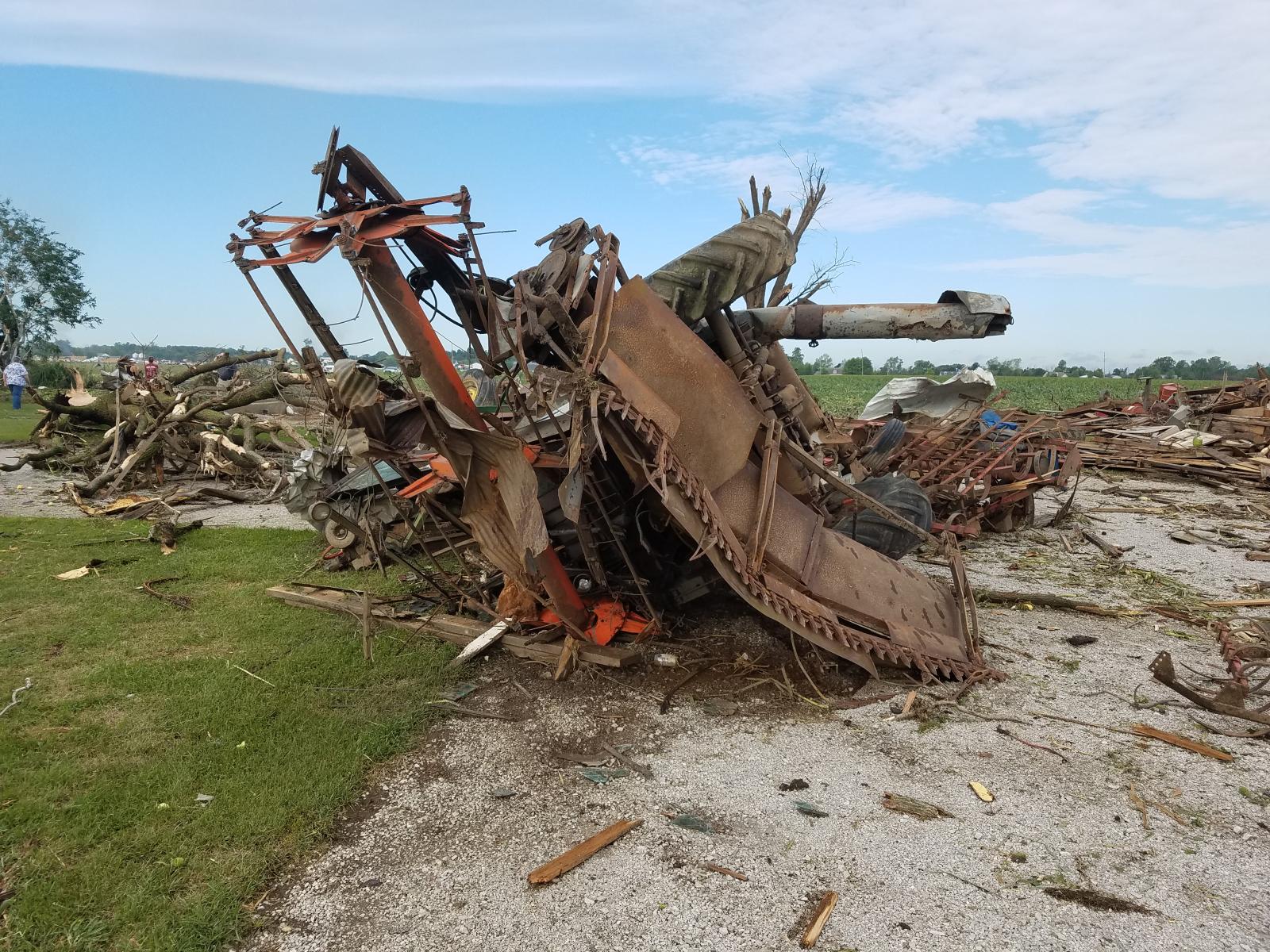
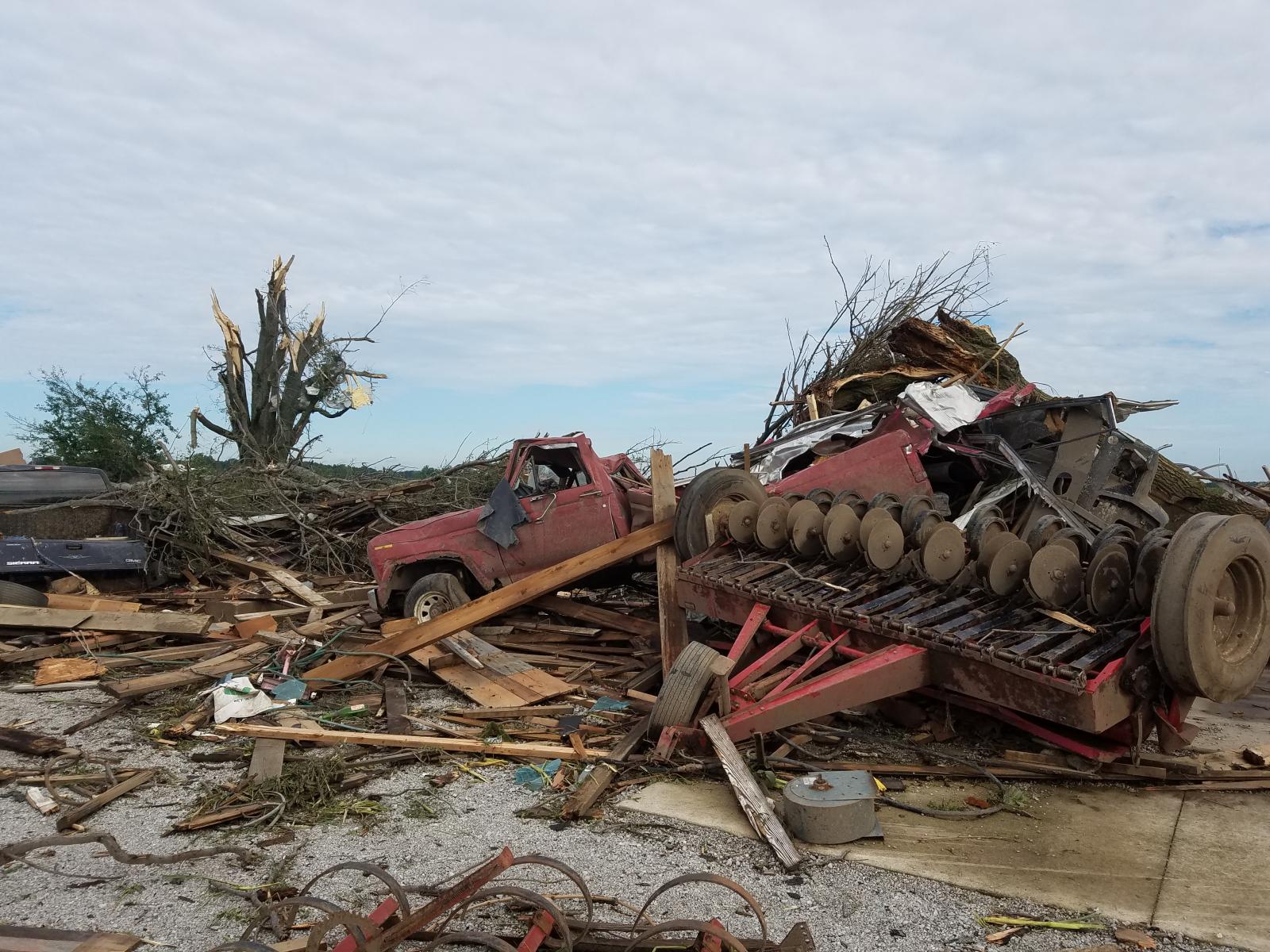
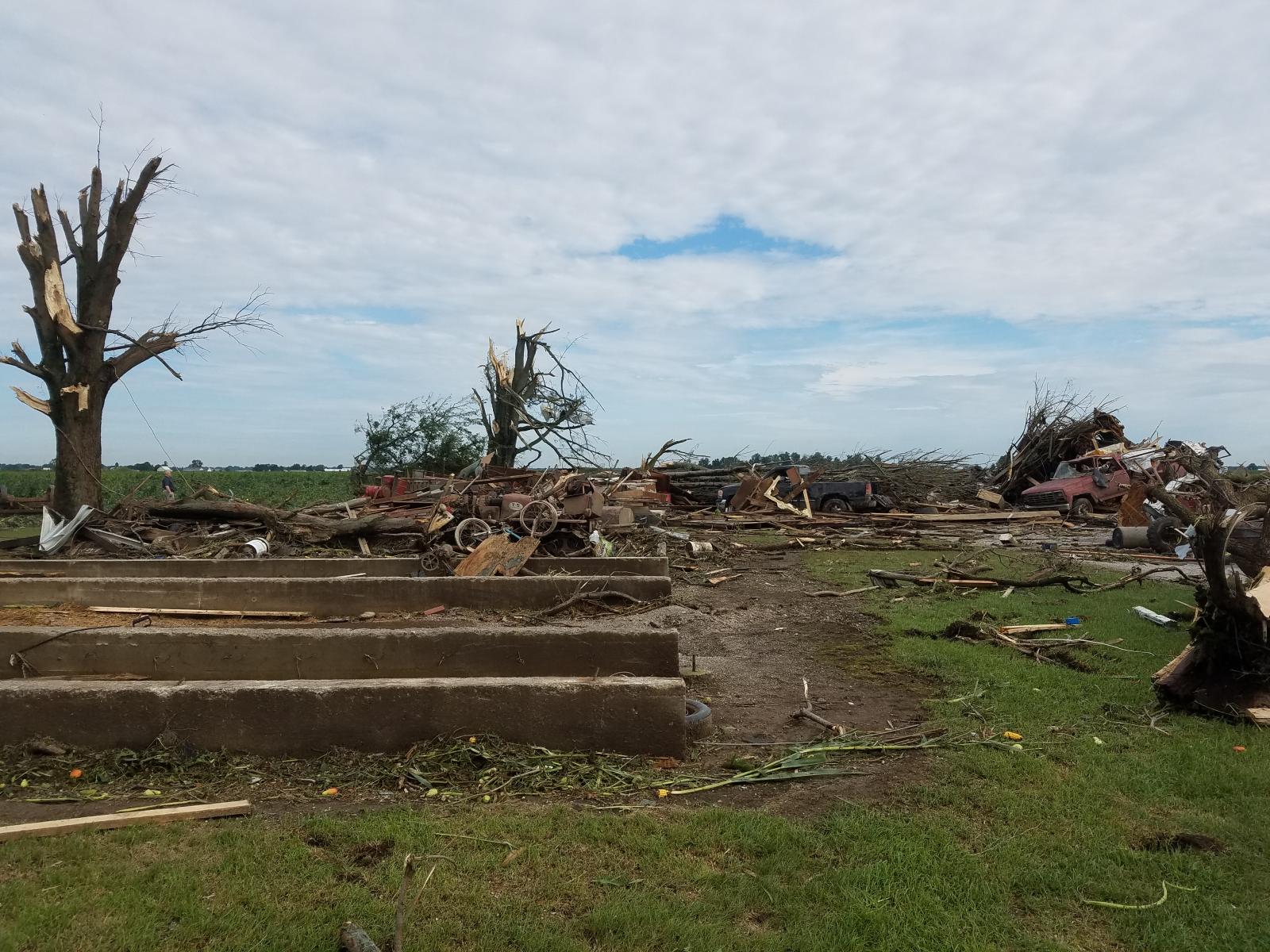
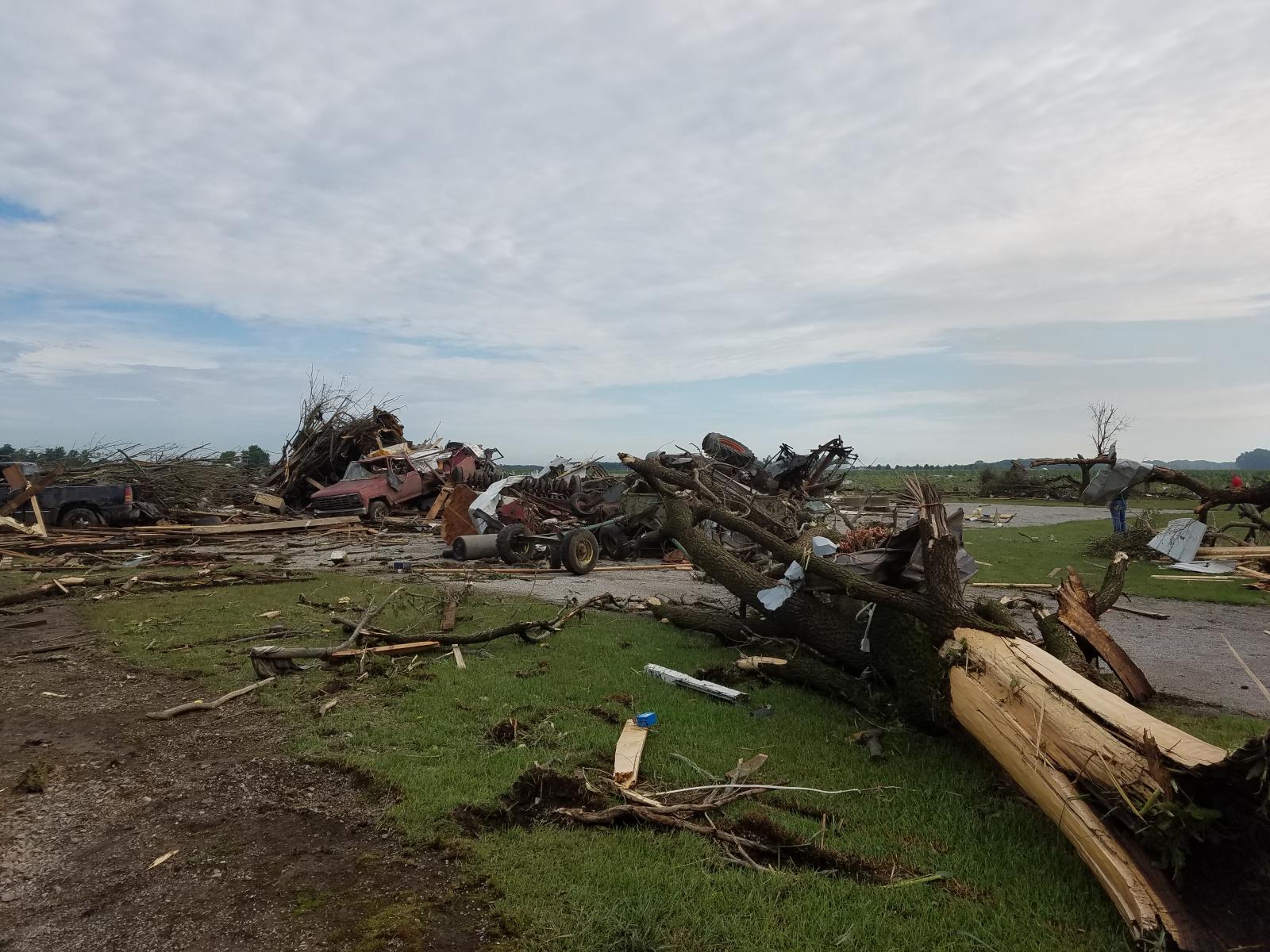
And on another note from this outbreak, this video of the Kokomo EF3 is one of the craziest tornado videos I've ever seen - and that's saying something because I've seen lots of tornado videos.
Again, Tim Marshall is not responsible for the EF3 rating in Matador. As explained previously, he found the damage to be consistent with a very violent tornado, and stated as such on his posts regarding the event. He was actually impressed by it, but differed the rating decision to NWS Lubbock, who worked in conjunction with Texas Tech University during the survey. TTU is notorious for not factoring in contextual evidence, and uses an absurdly strict engineering-only approach that uses the lowest conceivable wind speed estimate that could have possibly resulted in the failure of the structures in question. When using that approach, getting above the EF3 range is almost impossible. TTU and NWS Lubbock are to blame for this one, not Tim.As a Texan native; Matador was the worst in a very, very long time. Its overshadowed by Valley View where I live but anywhere west of DFW remembers that tornado. I archived every single video I could find of it on YouTube; which includes the damage.
I dont know what was going through Tim Marshall's head when rating it EF3; Im not going to judge nothing, but I expected more from a man who truly knows what a Texan grinder tornado does. While there is reason to believe it didnt need to have crazy 300+ mph winds to do what it did: it still did damage which requires 200+ mph winds even with it's slow forward movement. It hovered over Matador, very similarly to Jarrell; just doing circles in the same spot for at least 30 seconds as an extremely violent stovepipe. People described how the winds were lasting 3 minutes before ceasing; so it was quite literally a sort of Jarrell repeat, just without the barbed wire or glass involved.
I hope that someday, that someone who has tons more mathematical knowledge than I, can calculate what winds it would need with the time it sat over Matador.
(Take a peep at the attachments)
It also must be known that it preformed VERY SIMILAR scrub damage to the 2011 Piedmont EF5; you can see this in the last photo I put here below (near Matador Ranch)View attachment 37179
I am not some huge fan of Tim Marshall, but I am just tired of seeing his name attached to bad decisions that he simply did not make. He’s become the preferred scapegoat for tornado geeks, while the real culprits get overlooked.
Last edited:
For the record, I have actually concluded that there was enough evidence for an EF5 rating in Matador. There was one anchor bolted home completely swept away, and with the insane contextual damage, that should have been enough. I believe in a simple definition: Reasonably well-built house swept away + remarkably violent contextual damage = EF5. Matador met that criteria.
The other EF3 from the August 2016 outbreak (Woodburn) was actually quite violent in its own right. A combine was thrown 200 yards and mangled beyond recognition, vehicles were mangled including one car that was thrown over 500 yards, trees were denuded and partially debarked, crops were scoured, well-built barns were obliterated and a poorly anchored home was swept away. Less impressive damage to heavy farm equipment (imo) from the 2011 Pocahontas tornado was given a low-end EF4 rating, and NWS Northern Indiana blatantly admitted Woodburn would have gotten a higher rating if it encountered the right DI's at its peak intensity.




And on another note from this outbreak, this video of the Kokomo EF3 is one of the craziest tornado videos I've ever seen - and that's saying something because I've seen lots of tornado videos.
Interestingly enough, the NCDC entry for Woodburn actually mentions that it may have been an EF4. You usually don’t see comments like that in the database.
AJS
Member
Do you happen to have an image of the home? I think I know which one you may be talking about though.For the record, I have actually concluded that there was enough evidence for an EF5 rating in Matador. There was one anchor bolted home completely swept away, and with the insane contextual damage, that should have been enough. I believe in a simple definition: Reasonably well-built house swept away + remarkably violent contextual damage = EF5. Matador met that criteria.
AJS
Member
Some people unfortunately refuse to believe the truth and only want to hear what they want to hear. It’s been proven a lot that Tim was impressed with the Matador damage. I don’t know how people haven’t seen that.Again, Tim Marshall is not responsible for the EF3 rating in Matador. As explained previously, he found the damage to be consistent with a very violent tornado, and stated as such on his posts regarding the event. He was actually impressed by it, but differed the rating decision to NWS Lubbock, who worked in conjunction with Texas Tech University during the survey. TTU is notorious for not factoring in contextual evidence, and uses a absurdly strict engineering-only approach that uses the lowest conceivable wind speed estimate that could have possibly resulted in the failure of the structures in question. When using that approach, getting above the EF3 range is almost impossible. TTU and NWS Lubbock are to blame for this one, not Tim.
I am not some huge fan of Tim Marshall, but I am just tired of seeing his name attached to bad decisions that he simply did not make. He’s become the preferred scapegoat for tornado geeks, while the real culprits get overlooked.
I don’t have one saved unfortunately. It was a basement foundation home with anchor bolts.Do you happen to have an image of the home? I think I know which one you may be talking about though.
Edit: I take that back. I do have one. Does it look like perfect construction? No. But it is poured concrete, anchor bolting is present, the subfloor is gone, and the concrete stemwall is actually broken. I could also settle for very high-end EF4 too, but in my opinion, it’s a rare situation like Rainsville where there’s just enough evidence for EF5 even though the foundation could be better quality. In this case, the contextual damage tells the story more accurately than the construction.
Attachments
Last edited:
- Messages
- 4,602
- Reaction score
- 9,481
- Location
- California, United States
- Special Affiliations
- SKYWARN® Volunteer
Hmmm.... I still think high-end EF4 would have been perfectly acceptable for Matador, but you've made a compelling enough case for me to go back and say "if Rainsville was rated EF5, why not this one?"I don’t have one saved unfortunately. It was a basement foundation home with anchor bolts.
Edit: I take that back. I do have one. Does it look like perfect construction? No. But it is poured concrete, anchor bolting is present, the subfloor is gone, and the concrete stemwall is actually broken. I could also settle for very high-end EF4 too, but in my opinion, it’s a rare situation like Rainsville where there’s just enough evidence for EF5 even though the foundation could be better quality. In this case, the contextual damage tells the story more accurately than the construction.
I do stand by that I don't think any WFO would have rated Matador EF5 post-2011 though. Like I said, if JAN didn't rate Bassfield EF5 then Matador wouldn't have stood a chance either.
Although, both tornadoes would have absolutely been slam-dunk F5's pre-1995 or so.
- Messages
- 4,602
- Reaction score
- 9,481
- Location
- California, United States
- Special Affiliations
- SKYWARN® Volunteer
Also, I hope these folks don't mind, but I'm curious to ask:
@andyhb, @CAL and @Fred Gossage, based on what you know about the EF scale, damage surveying and the Matador tornado itself - do you think the damage it caused qualified for an EF5 rating?
@andyhb, @CAL and @Fred Gossage, based on what you know about the EF scale, damage surveying and the Matador tornado itself - do you think the damage it caused qualified for an EF5 rating?
I think it certainly qualified for EF4, even high end EF4, EF5 I'm less certain of.
It's a very poor survey overall though. Tornadoes like that should simply not be rated EF3.
It's a very poor survey overall though. Tornadoes like that should simply not be rated EF3.








